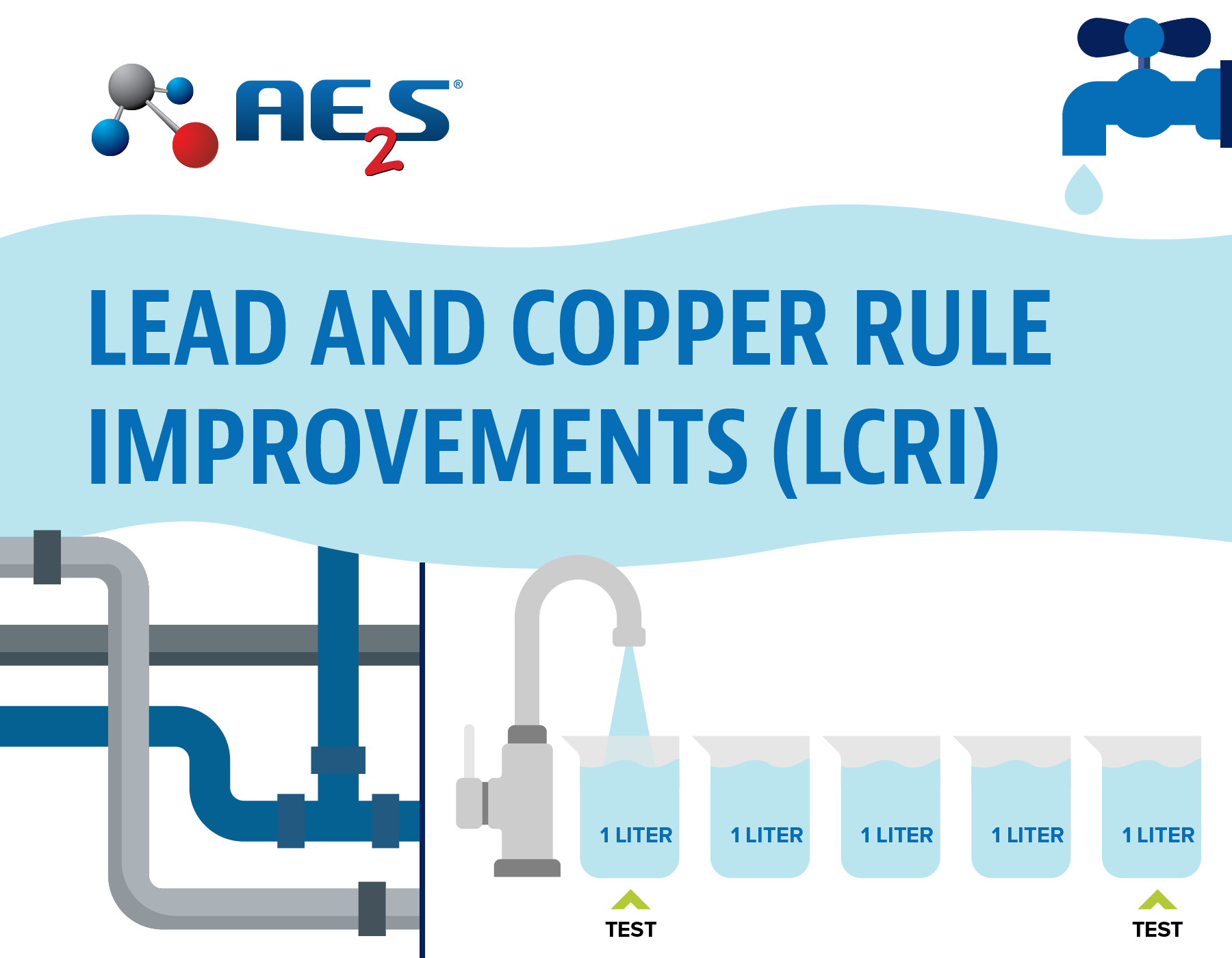On the last day of November, the U.S. Environmental Protection Agency (USEPA) announced the much-awaited proposed Lead and Copper Rule Improvements (LCRI). The water industry has been watching and waiting for the proposed changes to be released as water systems simultaneously work towards compliance with the Lead and Copper Rule Revisions (LCRR) deadline of October 16, 2024. USEPA intends to finalize the LCRI before the LCRR deadline.
Under the LCRI, USEPA proposes revisions to the LCRR schedule including a three-year delay following the final LCRI Federal Register publication except for the LCRR initial lead service line (LSL) inventory, notification to the public of service line materials and associated reporting requirements, as well as the Tier 1 public notification requirement for lead action level exceedance.
Additional changes to note:
- 10-year LSL Replacement Timeline. As proposed, the LCRI would require all lead services lines on the public and private sides to be replaced within 10 years.
- Lead Inventory. Water systems are currently required to provide an initial inventory of their lead service lines by October 16, 2024. Under the proposed LCRI, all water systems would be required to regularly update their inventories, create a publicly available service line replacement plan, and identify the materials of all service lines of unknown material. The LCRI clarifies that lead connectors are not considered lead service lines from a replacement requirement standard. However, lead connectors should be listed on lead service line inventories.
- Tap Sampling. The proposed LCRI would require water systems to collect first liter and fifth liter samples at sites with lead service lines and use the higher of the two values when determining compliance with the rule.
- Lower the Lead Action Level. USEPA proposes to lower the lead action level from 15 µg/L to 10 µg/L. When a water system’s lead sampling exceeds the action level, the system would be required to inform the public and take action to reduce lead exposure while concurrently working to replace all lead pipes.
- Reduce Lead Exposure. Water systems with three or more lead action level exceedances in five years would be required to conduct additional outreach to consumers and make filters certified to reduce lead available to all consumers.
- Increased Lead Communications. Water systems would be required to communicate more frequently and proactively with their customers about lead service lines and the system’s plans for replacing the lines.
The proposed LCRI is expected to be published in the Federal Register under Docket ID Number: EPA-HQ-OW-2022-0801 on December 6, 2023. Public comments will be accepted for 60 days.
USEPA will also host a webinar about the LCRI on December 6. USEPA will hold a virtual public hearing on January 16, 2024, at which the public will be invited to provide verbal comments. Those who are interested in the webinar can register here, and those who want to register to provide comments during the virtual public can register here.
If you would like additional information about the LCRR and LCRI, AE2S has gathered compliance information in the Perspectives and Insights section of ae2s.com. You can also reach out to Nate Weisenburger, AE2S Drinking Water Practice Leader, with questions about LCRR/LCRI compliance.

